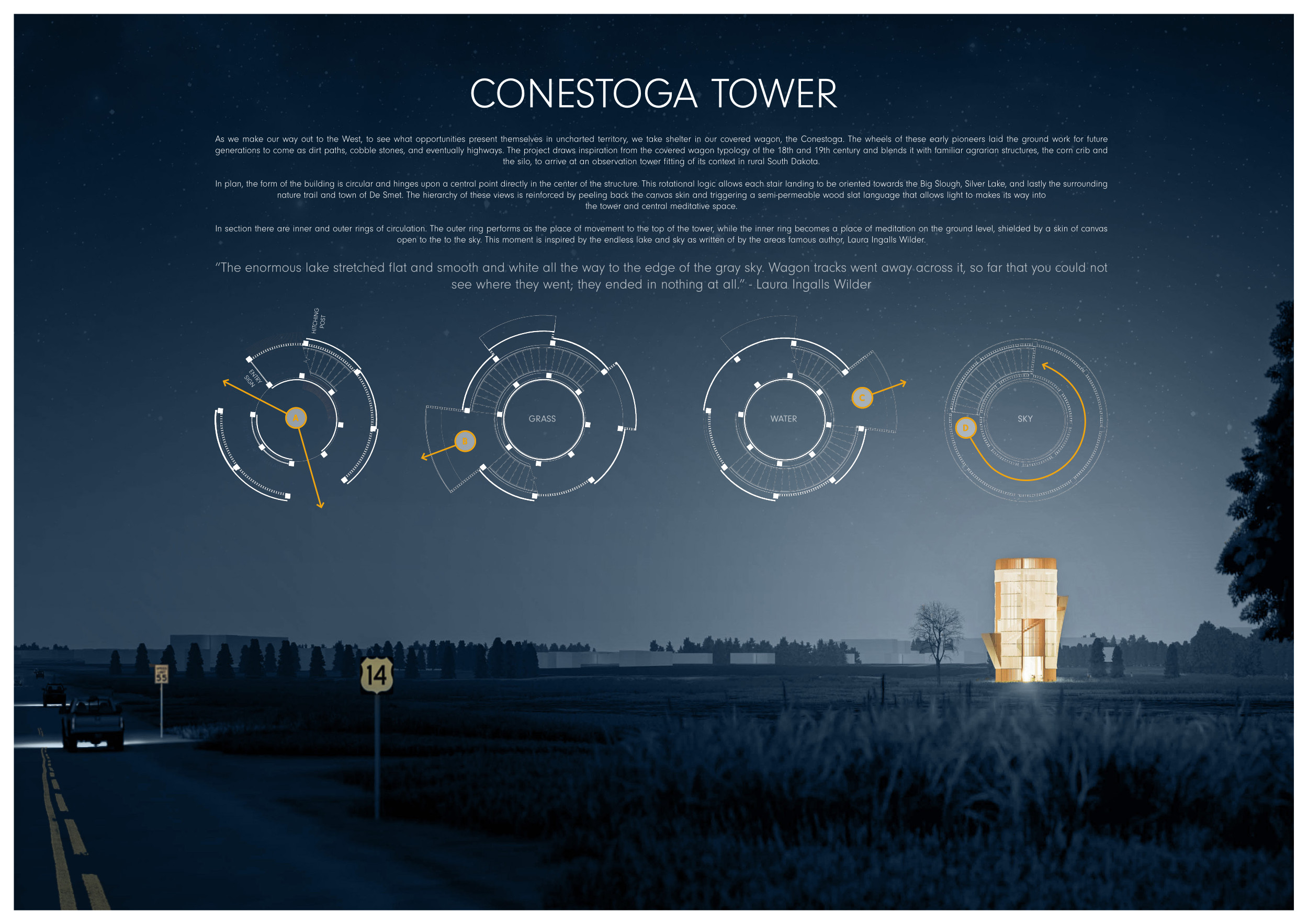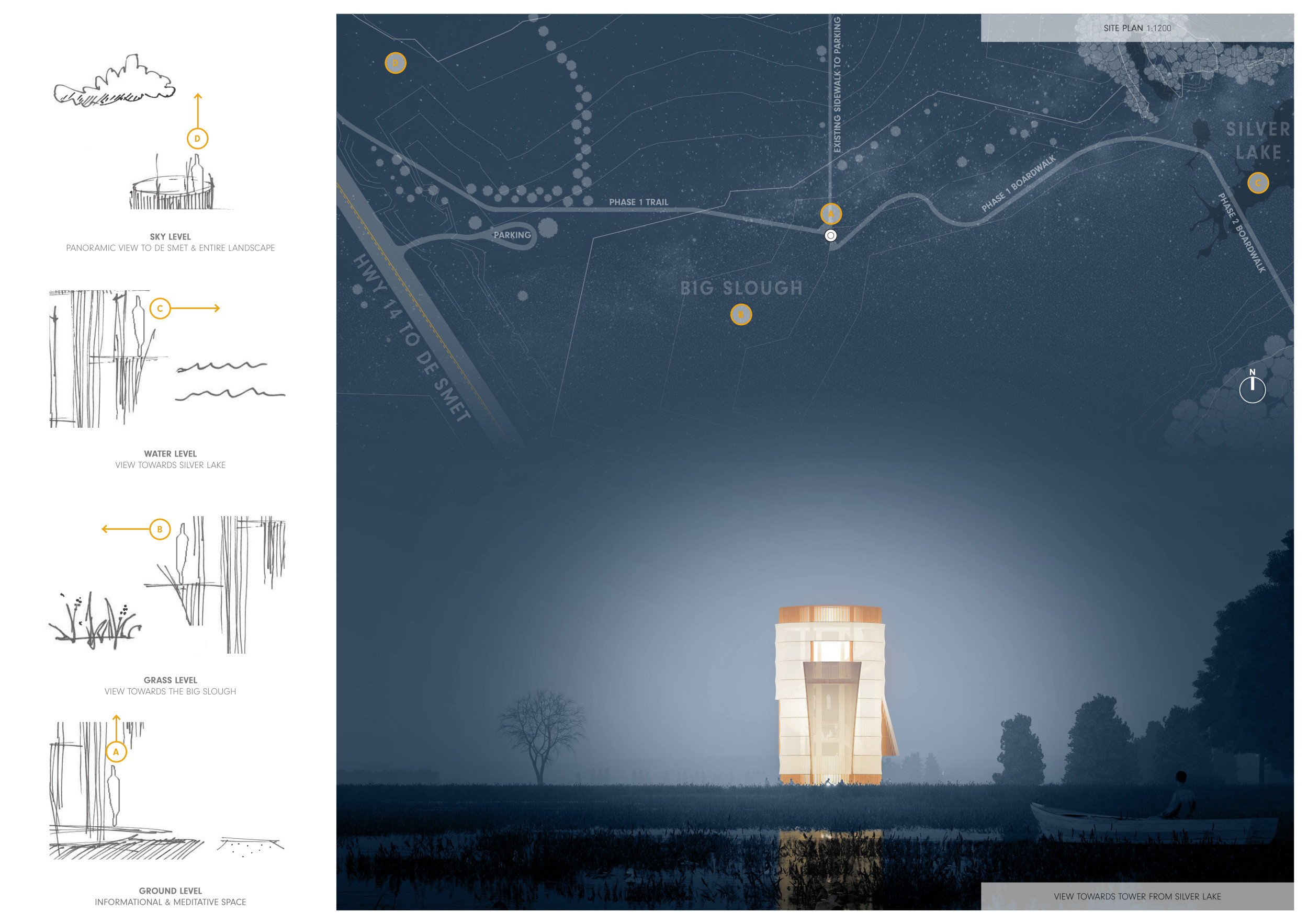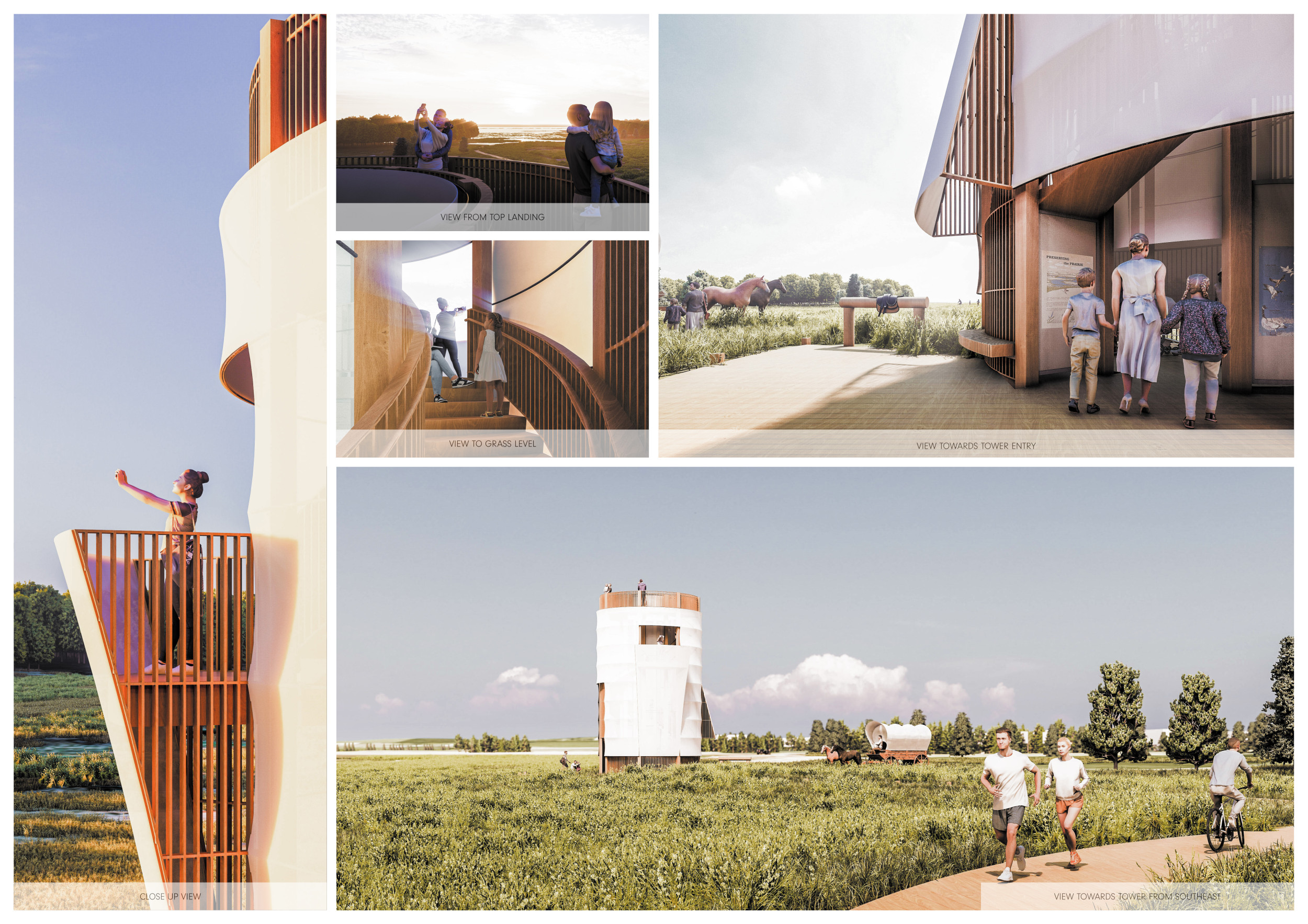5 key facts about this project
The Conestoga Tower's design is deeply rooted in its geographical setting. Its circular layout creates distinct zones that connect seamlessly to the site, specifically highlighting nearby features such as the Big Slough and Silver Lake. Each level of the tower has been meticulously designed to enhance the user experience, offering varied perspectives that foster interaction with the environment. The ground level provides accessible entry and serves as an informational hub, welcoming guests and serving as a gateway to the tower’s higher levels. The structure elevates as visitors ascend, promoting a journey that aligns with the pioneering spirit that inspired its creation.
Materials play a critical role in the architecture of the Conestoga Tower. The prevalent use of wood echoes the construction methods of historical Conestoga wagons, fostering a sense of continuity with the past. This material choice is not only aesthetically pleasing but also functional, contributing to the tower's sustainability and its ability to harmonize with the natural landscape. Glass elements strategically integrated into the design serve to enhance visibility and transparency, allowing visitors to experience the beauty of the surroundings while drawing in natural light. The deliberate use of metal for structural reinforcement balances the warmth of the wood, providing stability while maintaining visual interest.
Unique design approaches define the Conestoga Tower’s architecture. The twisting form of the structure is notable, imitating the flowing lines of the terrain and the movement of wagon trails. This carefully considered geometric shape encourages visitors to navigate the space intuitively. The inner and outer rings of the building are not only spatial but experiential, guiding how users interact with the tower and its environment. Each zone serves a specific purpose—while some invite contemplation, others foster engagement with nature and community.
The sky level is particularly compelling, as it offers sweeping vistas that connect visitors to the broader landscape, echoing the expansive wanderlust of the early settlers. This space serves as both an observation area and a gathering point, ideally suited for community events or personal reflection. Meanwhile, the lower levels integrate more intimate settings, promoting quietude amidst the bustling natural elements outside.
Overall, the Conestoga Tower represents a significant architectural proposition that not only honors the historical journey of its regional context but also establishes a new framework for community interaction and engagement with nature. This project invites exploration and appreciation of both architectural forms and environmental connections. For those eager to delve deeper into the intricacies of the design, examining the architectural plans, sections, and detailed designs will offer further insights into the thoughtful ideas that underpin this unique project. Visitors are encouraged to explore the project presentation for a more comprehensive understanding of the architectural choices and their implications in relation to the Conestoga Tower.


























